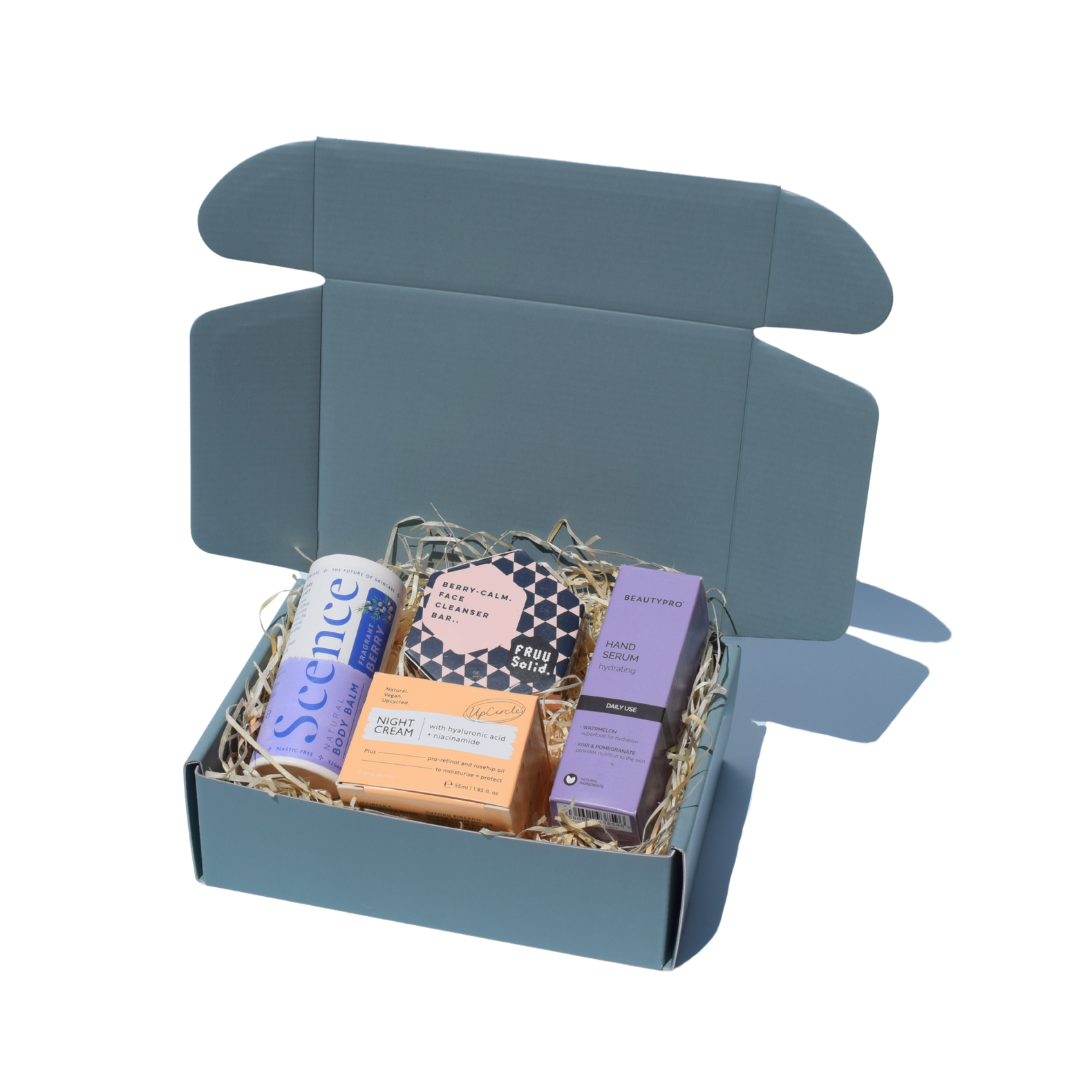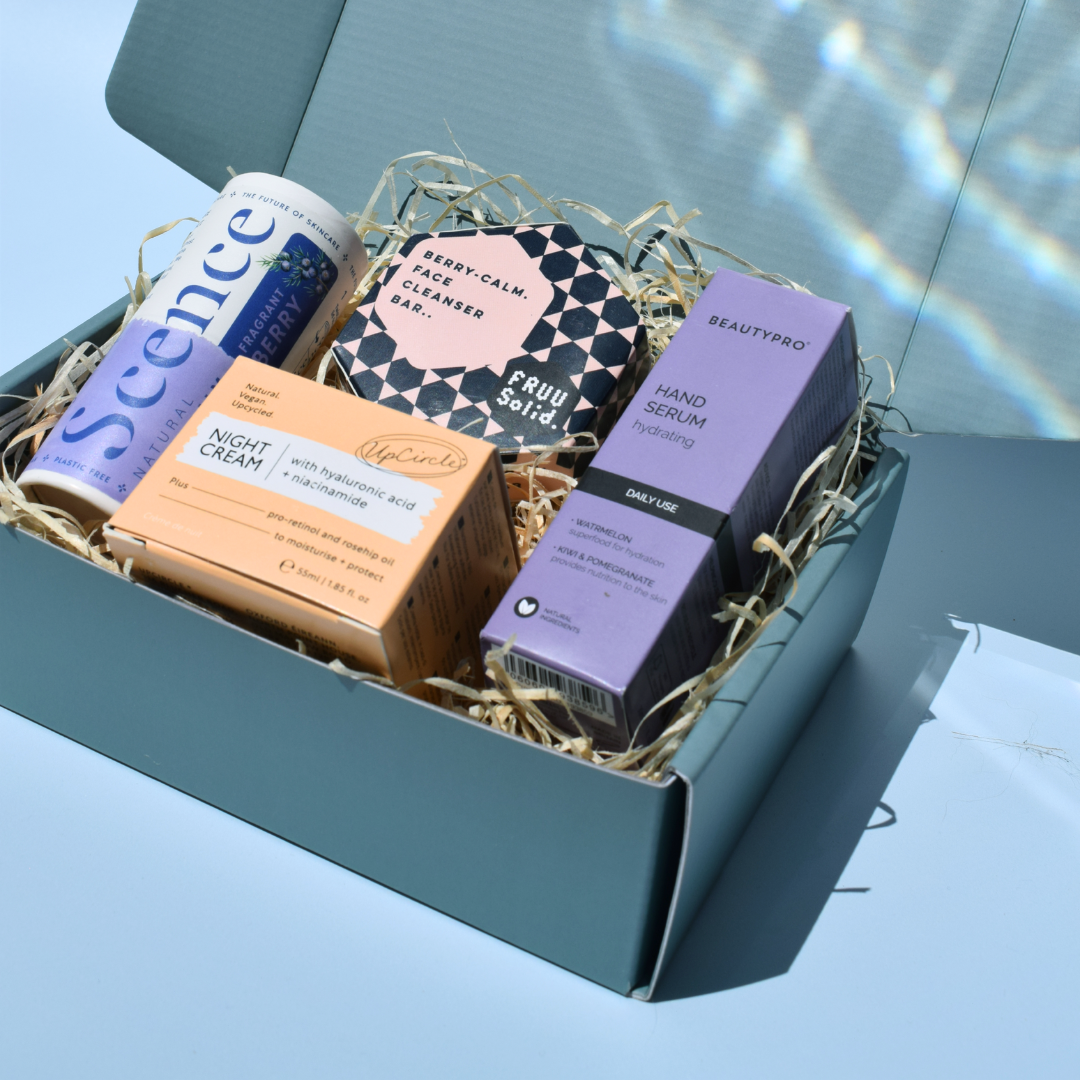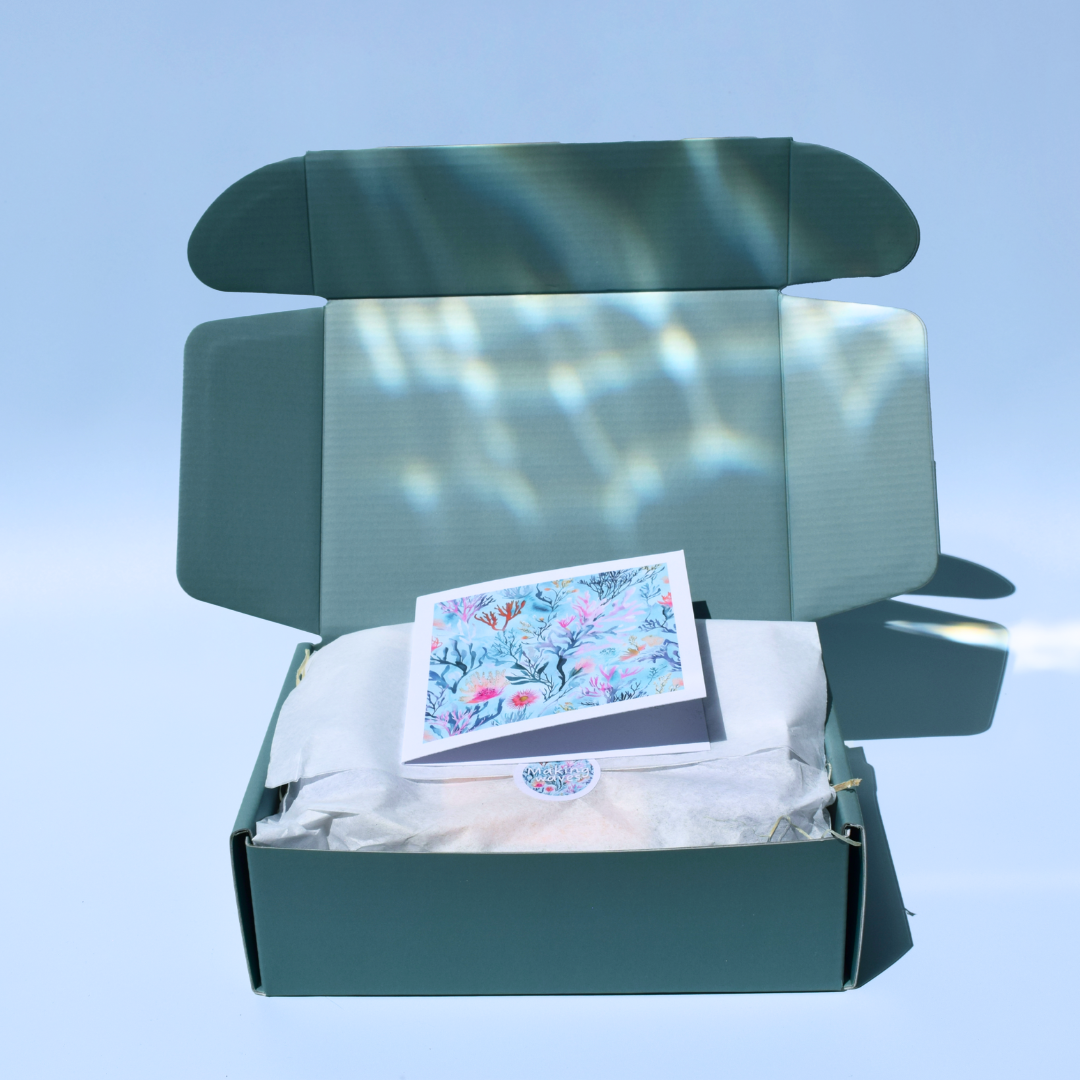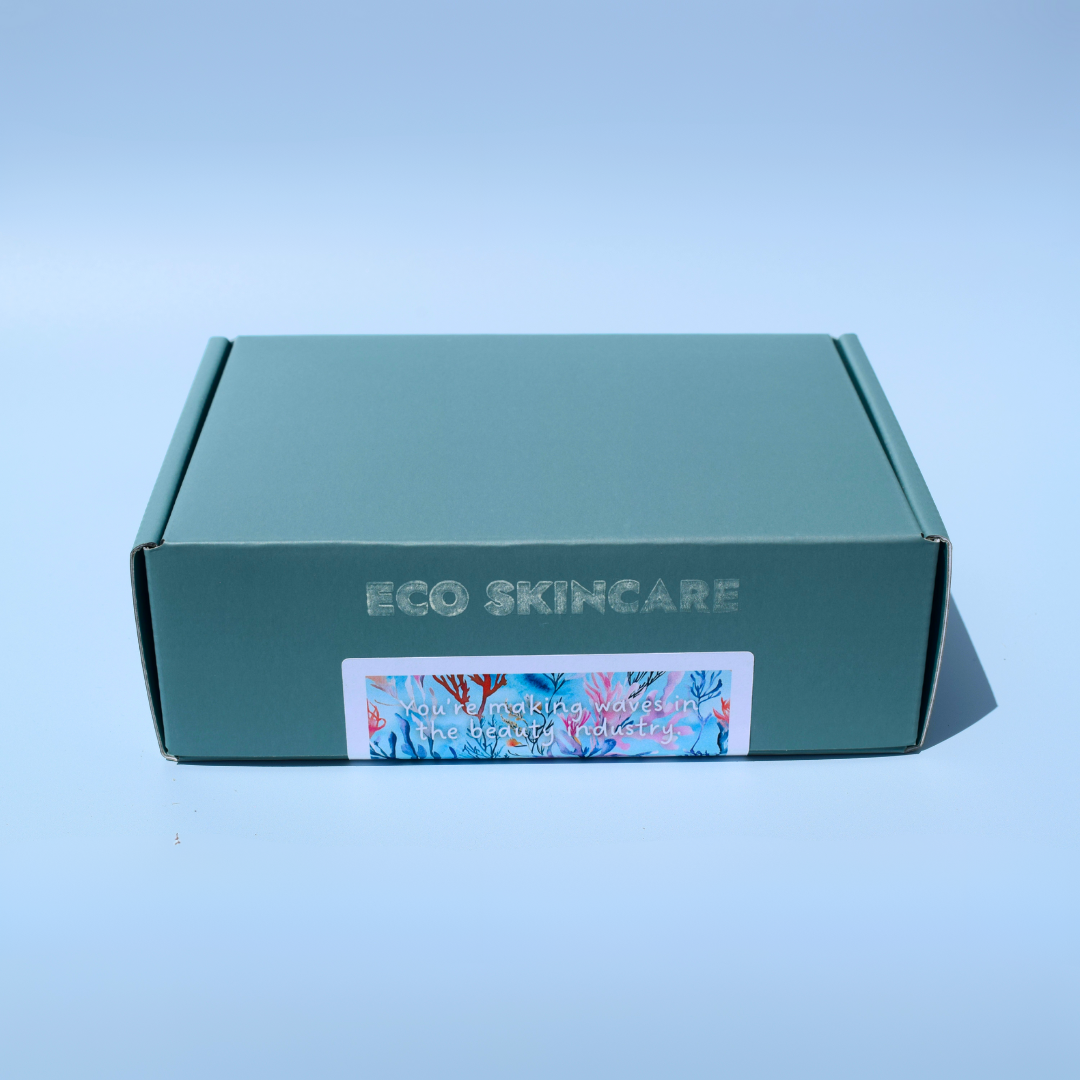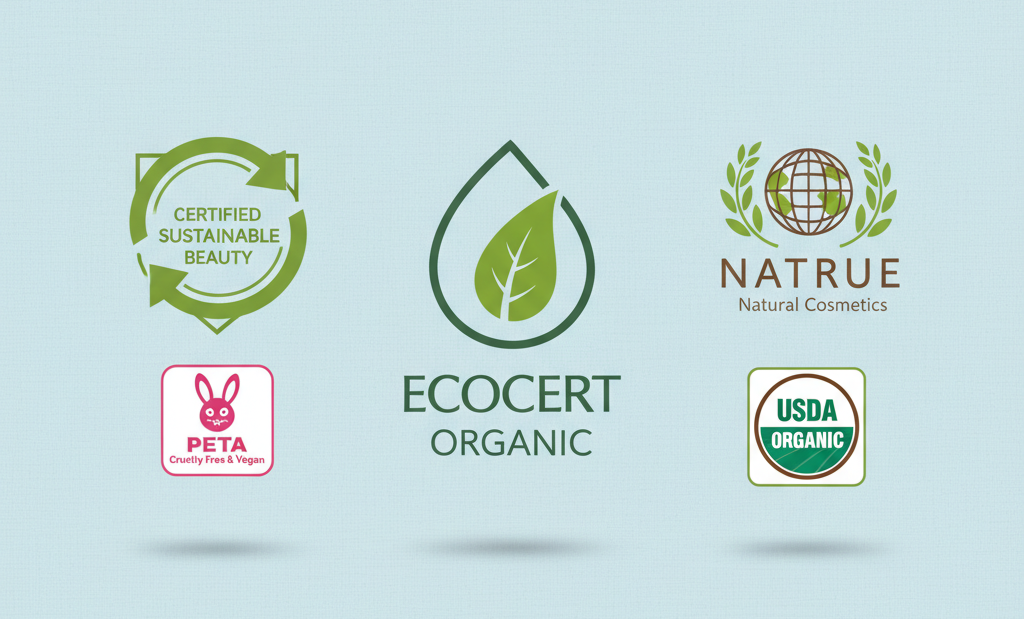
The Sustainable Beauty Certifications Guide: Which Labels Actually Mean Something?
Share
When browsing sustainable skincare, you've likely noticed an alphabet soup of badges, stamps, and certificates plastered across packaging. A bunny here, a leaf there, perhaps a circular arrow or two. But here's the uncomfortable truth: many of these symbols are essentially meaningless marketing tools created by brands themselves, whilst genuine third-party certifications require rigorous verification, transparent standards, and ongoing compliance checks.
So how do you tell the difference between a legitimate sustainability certification and clever greenwashing? This comprehensive guide decodes the certifications that actually matter in the beauty industry, explains what each one genuinely verifies, and arms you with the red flags to spot questionable claims. Because understanding these labels isn't just about feeling good about your purchases—it's about directing your money towards brands genuinely committed to change.
Why Beauty Certifications Matter (And Why So Many Don't)
The beauty industry faces minimal regulation regarding sustainability and ethical claims. Unlike food, where terms like "organic" are legally protected in the UK and EU, beauty brands can use words like "natural," "eco-friendly," or "green" with virtually no oversight. This regulatory gap has created a Wild West of self-awarded badges and invented certifications that look official but verify nothing.
Legitimate certifications, by contrast, involve independent third-party organisations that assess brands against transparent, published standards. These certifying bodies conduct audits, require documentation, and can revoke certification if standards aren't maintained. The difference between a genuine certification and a marketing badge is the difference between accountability and advertising.
The Gold Standard: Certifications You Can Trust
Soil Association Organic (COSMOS-Standard)
What it verifies: Organic ingredient content, sustainable sourcing, environmentally responsible manufacturing, and restricted ingredient lists.
Legitimacy rating: Excellent
The Soil Association operates as a member of the internationally recognised COSMOS-standard, which sets strict criteria for organic and natural cosmetics across Europe. To earn this certification, products must contain a minimum percentage of organic ingredients (95% for products labelled "organic," 20% for products labelled "natural"), exclude thousands of synthetic ingredients, use environmentally friendly manufacturing processes, and employ sustainable packaging wherever possible.
Certification requires annual audits and full supply chain transparency. Brands cannot simply pay for the logo—they must demonstrate compliance at every production stage. In the UK, the Soil Association certification is widely considered the most rigorous organic beauty standard linked to COSMOS.
What to look for: The distinctive Soil Association symbol with either "organic" or "made with organic ingredients" text. The certification will include a percentage figure indicating organic content.
Leaping Bunny (Cruelty Free International)
What it verifies: No animal testing at any stage of product development, including ingredients and finished products, with supplier monitoring systems in place.
Legitimacy rating: Excellent
Administered by Cruelty Free International, Leaping Bunny represents the global gold standard for cruelty-free certification. It requires a legally binding contract committing the company to ongoing independent audits, a fixed cut-off date (no animal testing past this point), and comprehensive monitoring of the entire supply chain, including ingredient suppliers. The programme also mandates companies implement a Supplier Monitoring System to ensure compliance throughout.
Leaping Bunny's certification extends beyond brand promises to actual verification and annual renewal, making it more stringent than other cruelty-free programmes like PETA's Beauty Without Bunnies, which relies primarily on company statements.
What to look for: The jumping bunny logo, often accompanied by "Cruelty Free International" text. Avoid confusing this with generic or brand-created bunny symbols.
The Vegan Society Trademark
What it verifies: Products contain no animal-derived ingredients or by-products, and no animal testing occurred during development.
Legitimacy rating: Excellent
The Vegan Society, which coined the term "vegan" in 1944, operates the oldest and most recognised vegan certification programme. Registration involves full ingredient disclosure—including potential processing aids and carrier agents—and verification that no animal-derived substances are present or cross-contamination occurs during manufacturing. Companies must also confirm no animal testing occurred during product development.
The Vegan Society's review encompasses manufacturing processes and supply chains, requiring annual updates to maintain certification.
What to look for: The Vegan Society sunflower trademark with "Vegan" text. Registration numbers can be verified on their official website.
B Corporation Certification
What it verifies: Verified social and environmental performance, public transparency, and legal accountability across the entire business operation.
Legitimacy rating: Excellent
B Corp certification evaluates companies holistically against the B Impact Assessment, covering governance, workers, community, environment, and customers. Beauty brands attaining B Corp status demonstrate verified commitments to sustainability, fair labor, and corporate responsibility extending beyond product-level claims.
Unlike product-specific labels, B Corp certification validates the whole company's policies and practices, requiring recertification every three years with public performance reporting.
What to look for: The "Certified B Corporation" logo. Claims can be confirmed via the B Corporation directory.
PETA's Beauty Without Bunnies
What it verifies: Company policy against animal testing, verified through written assurances.
Legitimacy rating: Good (with caveats)
PETA certifies companies based on their written commitment that neither they nor their suppliers conduct animal testing. While meaningful, this programme does not require the independent audits or supplier monitoring mandated by Leaping Bunny, making it less rigorous.
PETA certification indicates a positive step toward cruelty-free status but is generally recommended as an entry-level certification, with Leaping Bunny preferred for enhanced credibility.
What to look for: The "PETA-Approved" bunny logo, often with "cruelty-free" or "cruelty-free and vegan" wording.
COSMOS Natural/Organic
What it verifies: Product composition, sustainable sourcing, environmentally responsible processing, and restricted synthetic ingredients.
Legitimacy rating: Excellent
COSMOS (COSMetic Organic and natural Standard) was established by five European certification bodies (including the Soil Association) to unify standards for natural and organic cosmetics. COSMOS Natural requires at least 95% natural-origin ingredients, while COSMOS Organic mandates specified minimum organic content levels. The standard also prohibits many petrochemicals, mandates biodegradability where possible, and requires environmentally responsible manufacturing.
Annual audits and supply chain transparency are compulsory, making COSMOS one of the most trustworthy organic and natural cosmetic standards worldwide.
What to look for: The COSMOS logo with "Natural" or "Organic" designation, alongside the certifying body's logo (e.g., Soil Association, Ecocert).
Meaningful But Less Common Certifications
Natrue
What it verifies: Natural and organic ingredient content with strict processing requirements.
Legitimacy rating: Very Good
Natrue is a European certification with a three-tier system reflecting the degree of organic content and naturalness. It excludes synthetic fragrances and most petrochemicals and requires environmentally conscious processes.
EWG Verified
What it verifies: Products meet the Environmental Working Group's strict health and transparency standards.
Legitimacy rating: Very Good
Based in the USA but recognised internationally, EWG Verified indicates products meet stringent safety criteria based on ingredient evaluation in the EWG Skin Deep database. It requires full ingredient disclosure and adherence to good manufacturing practices.
Fair Trade Certified
What it verifies: Fair wages, safe working conditions, and community development for ingredient producers.
Legitimacy rating: Excellent
Though less common in beauty, Fair Trade certification for ingredients like shea butter or cocoa butter ensures verified ethical sourcing with premiums supporting producer communities.
Red Flags: How to Spot Questionable Certifications
Brand-Created Badges
If a badge appears only on one brand's products, it is almost certainly self-awarded. Genuine certifications apply consistent, published standards across multiple brands. Watch for official-looking logos without affiliated independent certifying bodies.
Example red flags:
- "Eco-friendly certified" without naming a certifying body
- Logos exclusive to one brand
- Certification names with no traceable website or standards
- "Approved by" badges from organisations that don't offer certification programmes
Vague or Undefined Claims
Legitimate certifications explicitly define their criteria. Terms like "sustainable," "natural," or "green" without third-party verification are often used loosely as marketing terms.
Greenwashing Through Packaging Design
Green colors, leaves, or earthy fonts do not equate to certification. Always look beyond packaging visuals toward verified claims.
"Approved" Versus "Certified"
"Approved" often signals weaker verification than "certified," which involves independent assessment and ongoing compliance.
Absence of Certification Numbers or Verification Links
Authentic certifications often provide registration numbers or verification codes linked to a public database. If these do not exist, verify the claim carefully.
The Certifications That Don't Exist (But Sound Like They Should)
Several official-sounding claims seen in marketing lack independent certification programmes:
- "Dermatologically tested": Indicates only that a dermatologist examined the product, not verified safety or efficacy.
- "Clinically proven": No independent standard; claims often based on brand-conducted small studies.
- "Recommended by experts": Without named, credentialed endorsers and public statements, this means nothing verifiable.
- "Eco-certified": Not a recognised third-party certification—pure marketing language.
- "Ocean-friendly": While some brands follow marine-conscious practices, no standardised certification exists for this claim.
How to Verify Certification Claims
When seeing unfamiliar certifications, follow these steps:
- Identify the certifying organisation: Check if an independent body is named.
- Search their website: Legitimate certifiers maintain public, searchable databases.
- Check certification requirements: Transparent certifications publish their criteria.
- Look for verification numbers: Cross-reference any registration numbers.
- Assess independence: Ensure the certifier is non-profit or publishes methodologies, operating independently of brands.
References and Further Reading
- Soil Association COSMOS Standards. Soil Association. https://www.soilassociation.org/certification/beauty-wellbeing/cosmos-standard/
- Cruelty Free International - Leaping Bunny Programme. https://www.crueltyfreeinternational.org/what-we-do/corporate-engagement/leaping-bunny-programme
- The Vegan Society Trademark Standards. The Vegan Society. https://www.vegansociety.com/the-vegan-trademark
- B Corporation Certification. B Lab. https://www.bcorporation.net/en-us/certification
- PETA Beauty Without Bunnies. PETA. https://www.peta.org/living/personal-care-fashion/beauty-without-bunnies/
- COSMOS-standard International Requirements. COSMOS-standard. https://www.cosmos-standard.org/
- Natrue Label Criteria. Natrue. https://www.natrue.org/our-standard/natrue-label/
- Environmental Working Group Verified Programme. EWG. https://www.ewg.org/ewgverified/
- Ecocert Certification for Cosmetics. Ecocert. https://www.ecocert.com/en-US/business-sectors/cosmetics
- Leaping Bunny Certification Guidelines. Cruelty Free International. https://www.leapingbunny.org/sites/default/files/leaping-bunny_user-guide.pdf
- Understanding Clean Beauty Certifications. Orbasics. https://orbasics.com/blogs/stories/understanding-clean-beauty-certifications
- Fair Trade Certification Standards. Fair Trade International. https://www.fairtrade.net/



